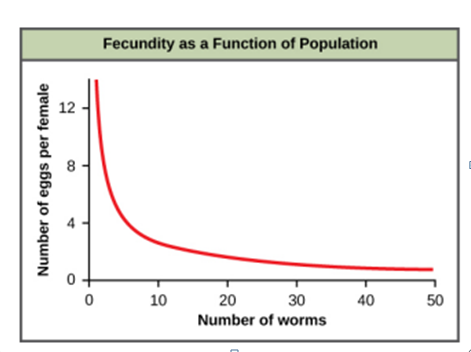In most plant-pollinator interactions, plants species are pollinated by
A) one animal species, and each animal species pollinates one plant species.
B) one animal species, and each animal species pollinates multiple plant species.
C) multiple animal species, and each animal species pollinates one plant species.
D) multiple animal species, and each animal species pollinates multiple plant species.
D
You might also like to view...
Which of the following is a desirable general characteristic of antimicrobial drugs?
A. Broad-spectrum of activity B. Bactericidal rather than bacteriostatic C. Selective toxicity D. All of the choices are correct.
An example of density-dependent regulation is shown in this graph with results from a study focusing on the giant intestinal roundworm (Ascaris lumbricoides), a parasite of humans and other mammals. Denser populations of the parasite contained fewer eggs. One possible explanation for this is that females would be smaller in more dense populations (due to limited resources) and that smaller females would have fewer eggs. This hypothesis was tested and disproved in a 2009 study which showed that female weight had no influence. Given that each female was producing fewer eggs, why was the population continuing to grow?

a. More worms were moving in from adjacent populations.
b. The population was expanding due to increased mating.
c. With lower population densities, mortality decreased.
d. Lifespans were extending due to lower egg production.
Which two cellular components are enclosed by a membrane?
a. ribosomes and peroxisomes b. microtubules and cytosol c. Golgi apparatus and peroxisomes d. chloroplasts and microtubules e. endoplasmic reticulum and ribosomes
Which of the following can NOT be used to estimate a phylogenetic tree?
A. DNA sequences B. Homoplasies C. Fossil records D. Synapomorphies